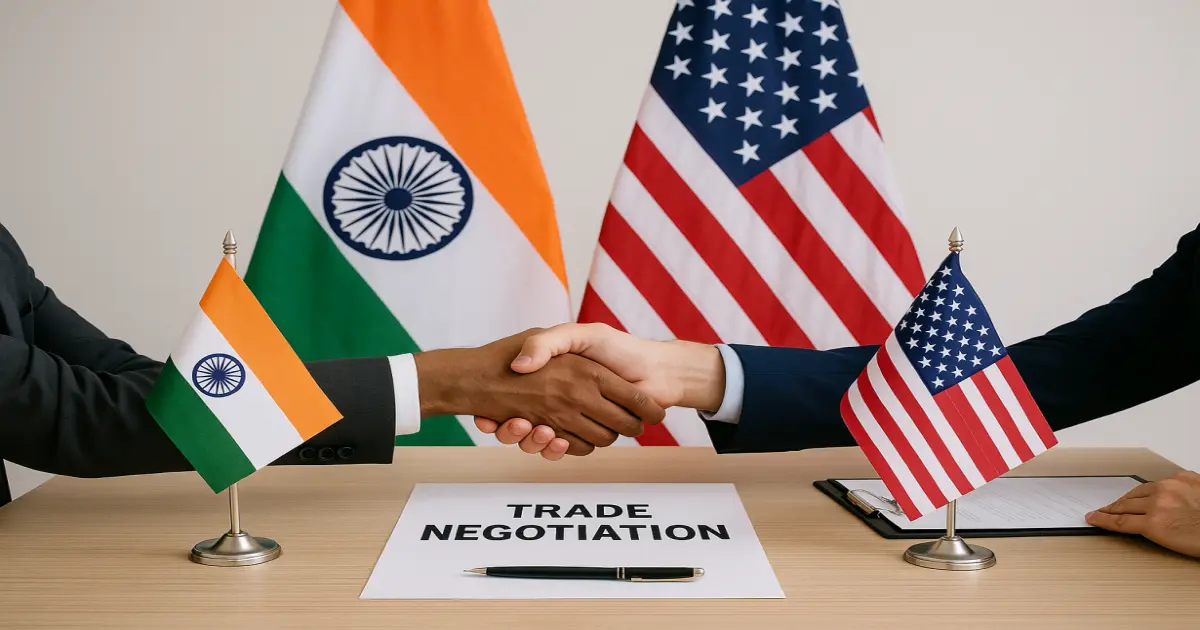India–U.S. Trade Deal is unlikely to reach any conclusion in the near future, as the Indian delegation had visited the USA and has now returned without any outcome from the discussions. This has triggered the possibility of tariffs on India from U.S. President Trump.
The Trump administration has imposed tariffs on several countries that are major trading partners of the United States of America. Following this approach, they imposed a 30% tariff on the European Union and Mexico, a 35% tariff on Canada, 25% on Japan and South Korea, and nearly a 55% tariff on China under the trade deal with the USA. These are some of the major trading partners facing significant tariffs from the U.S.
In addition, several countries around the world have received letters from the Trump administration indicating that tariffs will be imposed on them starting in August. Trump also emphasized that these dates are final and will not be changed under any circumstances. Therefore, any country that fails to reach a deal with the USA will face the tariffs as outlined in the letter.
Trump has repeatedly said that they are in serious talks with India to reach a deal, but the Indian side has not given any confirmation or response on the matter. Trump also stated that they are likely to strike a deal with India similar to the one made with Indonesia.
In the case of the Indonesia deal, a 19% tariff was imposed on all imports coming from Indonesia. In return, the U.S. received full access to all sectors in Indonesia, including agreements for the purchase of military equipment from Indonesia. So, several aspects were included in that deal.
However, reaching such an agreement with India is very difficult, and offering a deal of this nature from the Indian perspective to the USA remains a major challenge.
The Indian minister has repeatedly stated that India will make a deal on its own terms. Additionally, there are sensitive sectors such as agriculture and dairy, where India is unlikely to grant full access to the U.S. In contrast, under the Indonesia deal, the U.S. received broad access across all sectors of the country.
Trump has suggested that a similar deal with India might happen soon. However, the aggressive tone surrounding the negotiations is raising concerns in the market. Since there has been no official confirmation or finalization of the deal, the market remains uncertain and is not favouring either side.
Over the past two weeks, we have seen the Nifty market exhibit mostly flat movement.
It seems that India is also observing how the trade deals between the U.S. and its other major trading partners—such as Canada, Mexico, and the European Union—are taking shape. These developments will provide greater perspective on how future trade agreements may unfold.
There is also a report suggesting that India is considering negotiating for tariffs lower than 20%, according to Bloomberg. This is significant, as India may be aiming for a slightly better deal compared to other emerging economies like Indonesia and Vietnam.
Both countries currently face nearly 20% tariffs on their exports to the USA—Vietnam with 20% and Indonesia with 19%. India, on the other hand, is seeking lower tariffs due to its larger domestic consumption compared to both of these countries.
Neither the global markets nor investors have shown any significant caution regarding the Trump administration’s actions, such as sending calculations, delaying negotiations, or failing to conclude trade deals. On the contrary, global markets are continuing their upward momentum. The NASDAQ has shown a strong rally, reaching a high of 23,000, while the Canadian market has surged nearly 22% since the April and is now approaching the 27,000 level.
These trends indicate that the market is not showing concern about the trade deal situation. It seems the market assumes that Trump might extend the negotiation deadline once again. However, statements from the Trump administration suggest that they are not considering any such extension of the August 1 deadline.
U.S. Treasury Secretary Scott Bessant has also indicated that various trade deals are expected to be finalized in the near future. However, the nature of these deals and the responses from the major trading partners of the USA will play a crucial role, as they will shape the short-term outlook for the global economy.
Additionally, the outcome of these official trade negotiations will be a key factor in determining the future direction of the market in the coming times.
